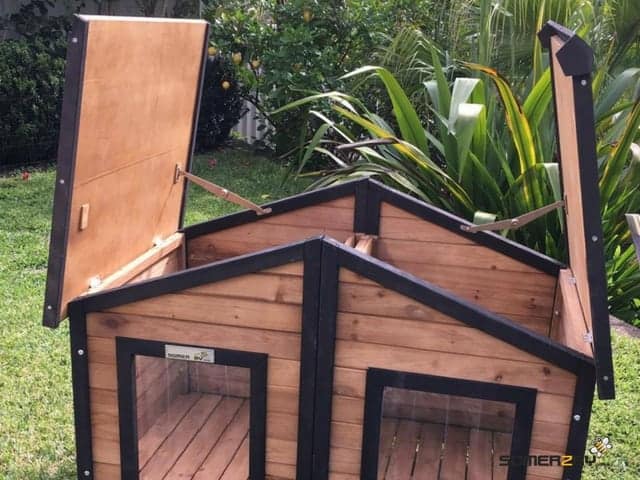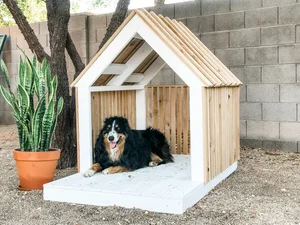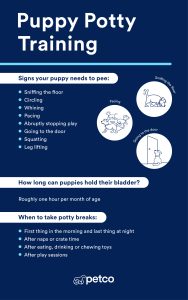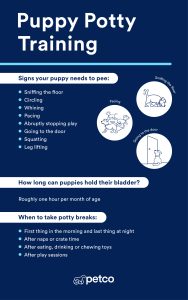If you want to give your dog a safe and cozy place to call their own, building a dog kennel is a great idea. Imagine your furry friend having their own space to relax, play, and feel secure.
You might think it’s hard or expensive, but it’s easier than you expect—and you can customize it to fit your dog’s needs perfectly. In this guide, you’ll discover simple steps to make a sturdy, comfortable kennel that your dog will love.
Ready to create a special spot for your best friend? Let’s get started!

Credit: www.humboldt.ca
Choosing The Right Location
Choosing the right location for your dog kennel is key to your pet’s comfort and safety. A well-placed kennel protects your dog from harsh weather and keeps the area clean and dry. It also makes daily care easier for you. Take time to pick a spot that balances all these needs.
Consider Shade And Shelter
Pick a place that offers natural shade or room for a shelter. Shade helps keep your dog cool in hot weather. Shelter blocks wind, rain, and snow. Both protect your dog from extreme weather. Trees or a covered area work well for shade and shelter.
Check Ground Drainage
Choose a spot with good drainage to avoid puddles and mud. Standing water can cause health issues and make the kennel dirty. Look for slightly raised or sloped ground. Avoid low or flat areas where water collects easily.
Ensure Accessibility
Make sure the kennel is easy to reach. Choose a spot near your home or garden path. This saves time and effort during feeding and cleaning. Also, check that the area is safe and free from hazards. Easy access helps keep your dog safe and happy.
Selecting Materials
Choosing the right materials is crucial when building a dog kennel that lasts and keeps your pet comfortable. Your selection affects durability, comfort, and how easy the kennel is to maintain. Think about your climate, your dog’s needs, and your budget before picking materials.
Wood Types And Durability
Wood offers a natural look and good insulation, but not all woods are equal. Cedar and redwood resist rot and insects better than pine or fir, making them excellent choices for outdoor kennels. Pressure-treated wood is also durable but make sure it’s safe for pets to avoid chemical exposure.
Have you considered how your dog’s activity level might affect the wood? Hardwoods handle wear better, while softer woods might get scratched and chewed up quickly. Choosing the right wood can save you time on repairs and keep your kennel looking great.
Insulation Options
Insulation keeps your dog warm in winter and cool in summer. Foam board insulation is easy to install and provides solid temperature control without adding much weight. Reflective insulation can also help by bouncing heat away during hot days.
Think about adding a weatherproof barrier to protect insulation from moisture. Have you noticed how a well-insulated kennel can reduce your dog’s anxiety by maintaining a stable environment? It’s a small detail that makes a big difference.
Flooring Choices
Flooring affects comfort, hygiene, and kennel longevity. Raised wooden floors help keep your dog dry and prevent rot by allowing air circulation beneath. You could also use durable, non-slip rubber mats for easy cleaning and added comfort.
Concrete floors are easy to clean but can get cold and hard on paws. Adding removable bedding or mats can solve that problem. What flooring option will keep your dog both happy and healthy?
Designing The Kennel
Designing the kennel is a crucial part of building a safe and comfortable space for your dog. It’s not just about making a shelter; it’s about creating an environment where your dog feels secure and happy. Every detail matters, from the size to the airflow, and even where you place the doors and windows.
Size Requirements
Think about your dog’s breed and size before deciding on the kennel dimensions. Your dog should be able to stand, turn around, and lie down comfortably without feeling cramped. If your dog is still growing, add a little extra room to accommodate their future size.
A good rule is to measure your dog from nose to tail and then add at least 12 inches to the length. For height, measure from the floor to the top of your dog’s head when standing and add a few inches for clearance. This ensures your dog has enough space to move and relax.
Ventilation Needs
Fresh air circulation is essential to keep your dog cool and prevent odors or moisture buildup inside the kennel. Make sure the design allows for proper airflow without exposing your dog to strong drafts. You want a balance where air moves freely, but your dog stays warm and protected.
Openings near the top and bottom of the kennel walls can help create a natural flow of air. If you live in a hot climate, consider adding a small, adjustable vent or mesh panels. This way, you can control ventilation depending on the weather.
Door And Window Placement
Where you put the door and windows affects your dog’s comfort and safety. Place the door in a spot that’s easy for your dog to access but not directly in line with prevailing winds or heavy rain. This helps keep the inside dry and cozy.
Windows should be positioned to allow natural light but avoid direct sunlight that could overheat the kennel. You might want to add shutters or covers to control light and provide extra protection. Think about how often you’ll check on your dog and make sure you can easily see inside without disturbing them.

Credit: www.valestables.com
Building The Frame
Building the frame is the foundation of your dog kennel project. A strong frame ensures your kennel stands firm and keeps your dog safe and comfortable. Pay close attention to accuracy and sturdiness during this phase to avoid issues later.
Measuring And Cutting
Start by measuring the dimensions of your dog kennel based on your dog's size and available space. Use a tape measure and mark your wood pieces clearly before cutting. Cutting precisely saves you time and frustration during assembly.
Use a saw that you feel comfortable handling, whether it’s a handsaw or a power saw. Always wear safety gear like gloves and goggles to protect yourself. Have a helper hold the wood steady if possible—this makes cutting smoother and safer.
Assembling Walls
Lay out your cut pieces on a flat surface to visualize the kennel walls before joining them. Use screws or nails to attach the vertical and horizontal supports securely. Check that all corners form right angles; a carpenter’s square can be very helpful here.
Don’t rush this step. A well-assembled wall frame gives your kennel stability. If you notice any wobbling, reinforce the joints with extra screws or brackets. How confident do you feel about the sturdiness of your walls before moving on?
Adding Roof Support
The roof needs solid support to protect your dog from weather and provide structural integrity. Attach horizontal beams across the top of the wall frames to hold the roofing material. Consider using angled supports for extra strength, especially if you expect heavy rain or snow.
Think about ventilation as you add roof supports. Leaving a small gap or adding vents can keep air flowing, preventing your dog from overheating. What type of roofing material will you choose to balance protection and airflow?
Installing Walls And Roof
Installing the walls and roof is a key part of building a sturdy dog kennel. These elements protect your dog from weather and provide a safe, comfortable space. Focus on secure attachment and weatherproofing to ensure durability. Choose strong materials and take care with each step.
Attaching Panels
Start by aligning the wall panels with the kennel frame. Use screws or nails to fasten the panels firmly. Make sure edges meet tightly to avoid gaps. Check each panel for stability before moving to the next. Reinforce corners with brackets for extra strength.
Waterproofing Techniques
Apply a waterproof sealant to all wall surfaces. Use weather-resistant paint or wood preservative to protect wood panels. Seal any joints or seams with waterproof tape or caulk. This prevents water from entering and causing damage. Let everything dry thoroughly before adding the roof.
Adding Roofing Material
Choose roofing material that suits your climate, such as shingles or metal sheets. Attach the roofing securely to the frame using nails or screws. Make sure the roof slopes slightly to allow water runoff. Cover edges with flashing to stop leaks. Inspect the roof for gaps or loose parts before finishing.
Creating The Floor
Creating a strong and comfortable floor is key to building a good dog kennel. The floor supports your dog and keeps them safe from cold or wet ground. It should be sturdy, dry, and easy to clean. Proper floor design helps your dog stay healthy and happy inside the kennel.
Elevating The Floor
Raising the floor off the ground stops water and dirt from seeping inside. Use wooden beams or blocks to lift the floor at least a few inches. This creates air space under the kennel, which helps keep the floor dry. Elevation also protects the wood from rotting.
Adding Comfort Layers
Add soft layers on top of the floor to make it cozy. Use foam pads, blankets, or pet beds for extra comfort. These layers help warm your dog and reduce pressure on their joints. Change or clean them often to keep the area fresh and hygienic.
Sealing And Protecting
Seal the floor with a non-toxic paint or wood sealant. This prevents water damage and makes cleaning easier. Avoid harsh chemicals that can harm your dog. Regularly check the floor for cracks or damage and fix them quickly to maintain a safe space.
Adding Finishing Touches
Adding finishing touches to your dog kennel transforms it from a simple structure into a cozy and welcoming space for your furry friend. These details not only improve the kennel’s durability but also enhance comfort and usability. Let’s look at some key steps to complete your kennel with style and function.
Painting Or Staining
Choosing the right paint or stain protects the wood from weather damage and extends the life of your kennel. Opt for non-toxic, pet-safe products to keep your dog safe. A fresh coat of paint can brighten the kennel and match your yard’s style, while staining highlights the natural wood grain for a rustic look.
Think about the climate in your area. If it’s rainy or humid, a waterproof stain might be better than paint. You can even add a second coat for extra protection and a smooth finish. What colors would make your kennel stand out yet blend well with your outdoor space?
Installing Doors
Adding a door gives your dog easy access and keeps the kennel secure from other animals. Choose a door size that fits your dog comfortably—too small can be frustrating, too large might lose heat. Consider installing a latch or lock that’s simple for you but secure enough to keep your dog safe.
Sliding doors save space and are less prone to damage than hinged ones. If you want extra ventilation, a door with a mesh window can be helpful. Think about your dog’s habits—do they like to come and go freely, or do you prefer to control access?
Adding Bedding And Accessories
Comfort is key. Add soft bedding like a weather-resistant dog bed or blankets to keep your dog warm and cozy. Avoid materials that soak up moisture or are hard to clean.
Accessories such as food and water bowls, toys, or chew sticks make the kennel inviting and entertaining. Position bowls where spills won’t create a mess. Have you considered adding a shade or small roof extension for extra protection from sun and rain?

Credit: www.youtube.com
Maintaining The Kennel
Maintaining your dog kennel is just as important as building it. A well-kept kennel ensures your dog stays healthy, comfortable, and safe. Regular care prevents damage and keeps the space inviting for your furry friend.
Cleaning Tips
Clean the kennel at least once a week to avoid dirt buildup and unpleasant odors. Use pet-safe disinfectants to wipe down surfaces and remove any bacteria. Don’t forget to wash bedding and toys frequently—they can harbor germs and pests.
Spot clean daily by removing waste and debris. This habit helps keep the area fresh and reduces the chance of infections. Have you noticed how a clean kennel changes your dog’s mood and energy?
Seasonal Adjustments
Adjust the kennel according to the weather to keep your dog comfortable year-round. In winter, add warm bedding and consider a weatherproof cover to block wind and rain. During hot months, ensure good ventilation and provide shade to prevent overheating.
Monitor the temperature inside the kennel regularly. Sometimes small changes, like adding a cooling mat or extra insulation, make a big difference. What small tweaks have you made that helped your pet stay cozy?
Ensuring Safety
Check the kennel for any sharp edges, loose nails, or broken parts that could harm your dog. Repair or replace damaged sections immediately to prevent accidents. Secure the door and locks to keep your dog safe from wandering off or unwanted visitors.
Use non-toxic materials and avoid anything that your dog could chew and swallow. Have you ever found unexpected hazards in your pet’s space? Regular inspections can save you from costly vet visits and stress.
Frequently Asked Questions
How Do I Choose The Right Materials For A Dog Kennel?
Selecting materials depends on your dog’s size, climate, and budget. Use sturdy, weather-resistant options like treated wood or metal. Ensure the materials are non-toxic and safe for pets. Proper insulation is crucial for extreme weather conditions. Consider using a waterproof roof to protect against rain and snow.
What Size Should A Dog Kennel Be?
A kennel should allow your dog to stand, turn, and lie comfortably. Measure your dog from nose to tail and add a few inches for comfort. Consider the dog’s breed and future growth. For multiple dogs, provide enough space for each to move freely.
A spacious kennel ensures your dog’s comfort and well-being.
How Can I Ensure My Dog’s Safety In The Kennel?
Ensure the kennel is secure with a sturdy lock to prevent escapes. Use non-toxic, pet-safe materials to avoid health hazards. Regularly inspect for sharp edges or loose parts. Provide adequate ventilation and shade to maintain a comfortable temperature. Regular cleaning prevents bacterial growth and ensures a healthy environment.
What Is The Best Location For A Dog Kennel?
Choose a location with partial shade and protection from wind. Avoid direct sunlight to prevent overheating. Ensure the area is flat and has good drainage to prevent flooding. Proximity to your home allows easy access for feeding and monitoring. A quiet spot minimizes stress from noise and activity.
Conclusion
Building a dog kennel gives your pet a safe, cozy space. Use simple materials and follow easy steps. Your dog will enjoy fresh air and comfort. Regular cleaning keeps the kennel healthy and fresh. A well-made kennel lasts for many years.
Start small, and improve it as you go. Your dog deserves a happy, secure home outside. Keep your pet’s needs in mind throughout the process. Enjoy the bond that grows with a happy dog. A little effort makes a big difference for your dog.

Emily Barker is the founder of ChillDogLife.com, a space dedicated to helping pup parents discover the best dog products, lifestyle tips, and cozy ideas for happier homes.
A lifelong dog lover, Emily combines her passion for pets with a knack for research to share trusted recommendations on everything from toys and furniture to health and everyday care.
Her goal is simple: to make life easier, stylish, and more joyful for dogs and the people who love them.







